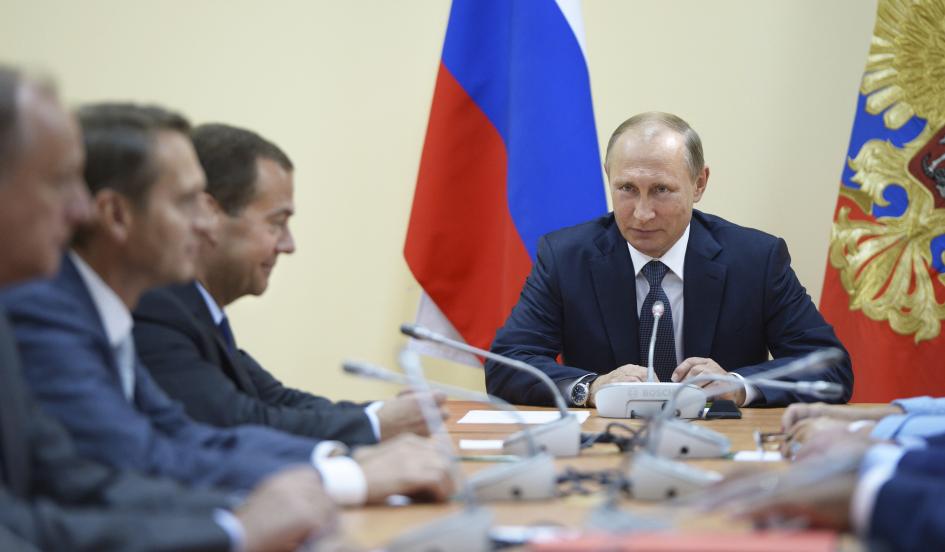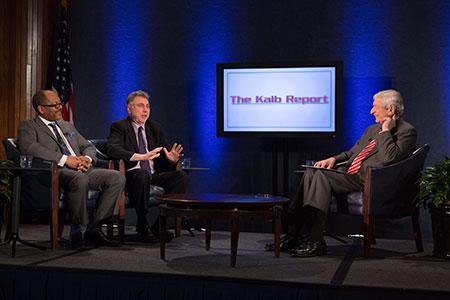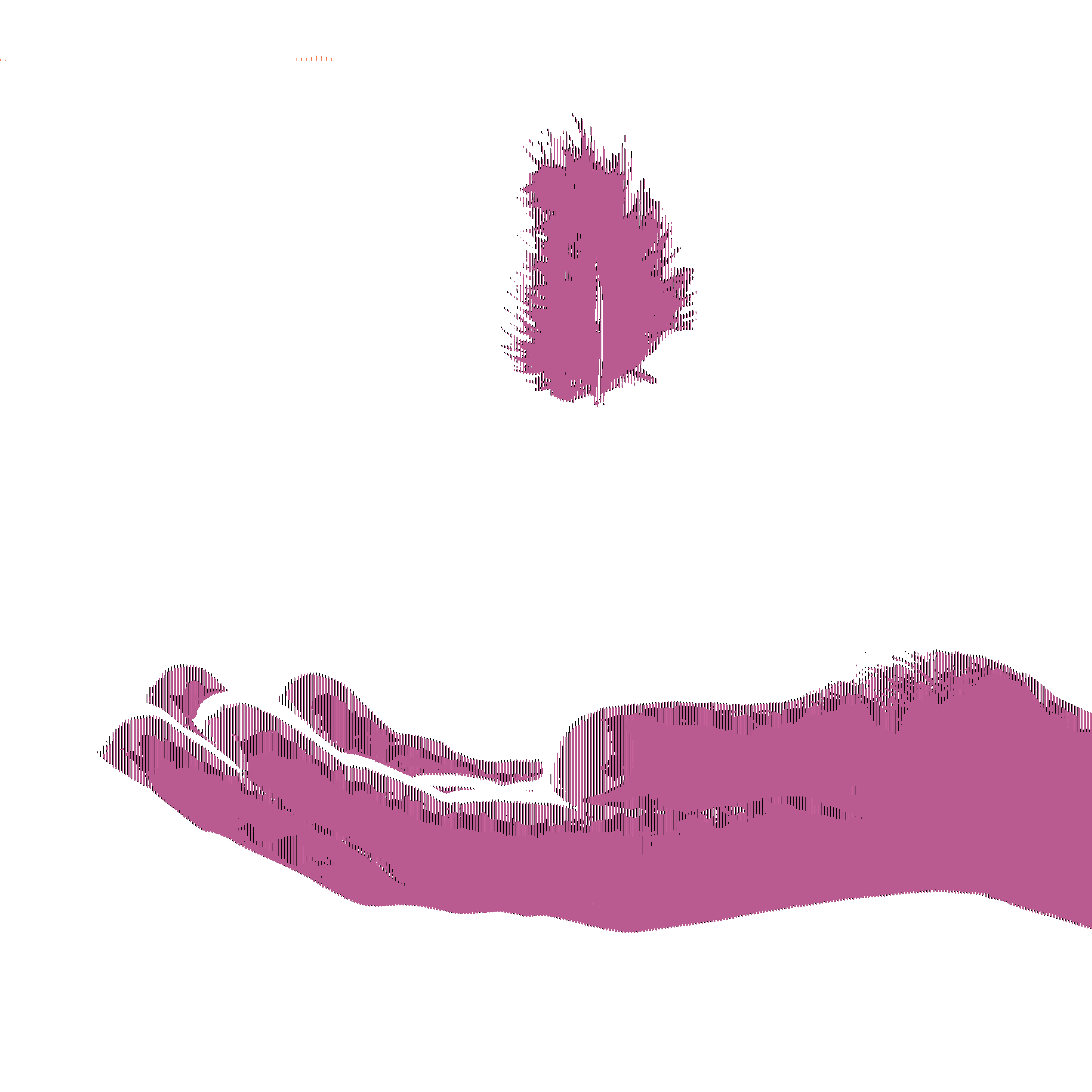
A deceptive late-summer pause has settled over the Ukraine crisis. At least, in the coverage of it. For many weeks now, the war in the Donbas has slipped off the front page.
Although leaders such as Germany's Chancellor Angela Merkel and Ukraine's President Petro Poroshenko still search for an acceptable formula to end the war, it has continued in the southeast corner of Ukraine, with casualties mounting.
Who fired first is no longer a relevant question. The point is that the war stumbles along with no end in sight. The twin rebel "republics" of Donetsk and Luhansk have slowly frozen into a Russian stronghold, effectively detached from the rest of Ukraine. They are always available to be manipulated as a pro-Russian weapon in the East-West battle for Ukraine's future.
Warming up?
Ukraine is no longer the top priority for American diplomats. They are understandably absorbed with selling the Iran nuclear deal to a reluctant Congress.
But, if Russian Foreign Minister Sergey Lavrov is to be believed, there are a number of senior officials who have also been sending signals to Russia suggesting that President Obama wants to turn a page and improve his frosty relations with President Vladimir Putin. "We are already getting such signals from the Americans," Lavrov said, "though for now not very clear."
Would Russia be open to better relations? Russia, responded the foreign minister, would "consider constructively" any such possibility.
Putin seemed more positive. As he told American former boxing champion Roy Jones, Jr. last week: "We have had different kinds of relations at different times, but whenever America and Russia's higher interest demands it, we always found the strength to build relations in the best possible way."
One possible translation: Putin now wants to emerge from the shadows of the Ukraine crisis and restore better relations with the West.
But, Obama and his top advisers, burned once by Putin when he shocked everyone and seized Crimea in late February 2014, do not want to be burned again. They realize that Putin—once a KGB colonel, now a modern Peter the Great (with a smidgen of Stalin)—is still capable, if he chooses, of throwing Europe and the world into a Cold War-style confrontation. If left unchecked, that could quickly dominate not only newspaper headlines but also global calculations about war and peace. He has that kind of clout.
Managed instability
Though Russia is not the Soviet Union, it still remains the boss of Eastern Europe. When it sneezes, as we have learned, Ukraine can catch a bad cold. These days, everything in and around Ukraine seems to be in what one journalist called "managed instability."
Putin can bring the crisis closer to a possible solution or he can widen the war. Or, more simply, he can "freeze" it. The key question is: What does Putin have in mind? What are his plans, assuming that he has plans, and is not winging the crisis day by day?
One line of reasoning, comforting to an extent, is that for the moment Putin has a plate full of challenges, more than enough to keep him busy. This makes him less inclined to shoot from the hip and more interested in an accommodation with the West.
What else explains his and Lavrov's overtures to the United States? Putin knows (or should) that Russia's economy is a mess, caused in part by Western economic sanctions against Russia and by falling oil prices. Official statistics show a 4.9 percent decline in gross domestic product in the second quarter of 2015, compared to the same quarter a year ago. Inflation may soar to 17 percent this year. Incomes have had to be drastically reduced, setting off mini-strikes in different parts of the country.
With respect to Ukraine, Putin's position is hardly ideal, but it is still manageable. He now owns Crimea and controls two rebellious provinces in the southeast Donbas region. He knows Ukraine faces the possibility of economic collapse, even though it has made some progress. The more it slips toward the abyss, the better his chances, he thinks, of keeping Ukraine out of the Western orbit, which has always been one of his principal goals. Putin has the assets to throw Ukraine into further chaos at any time.
Another line of argument, much less comforting, is that Putin has merely been waiting for the right moment to widen the war in Ukraine and perhaps elsewhere. Rebel fighters in the Donetsk and Luhansk provinces, supported by Russian forces, have recently been engaged in non-stop maneuvers, perhaps preparatory to a move on the strategic port of Mariupol, still in Ukrainian hands.
If Putin decided to strike, Western analysts believe that it would be a tough fight but that ultimately the pro-Russian forces would win. The Poroshenko regime would then be pushed to the edge of collapse.
How far would the West go?
But far more threatening to the West—specifically to NATO—is that Putin might launch a sophisticated hybrid attack into the Baltics, starting with Estonia, where 24 percent of the population is Russian. Because Estonia is a member of NATO, it can and would almost certainly invoke Article V, which says that an attack on one NATO member would be regarded as an attack on all.
President Obama promised last year during a visit to the Baltics that the United States would honor Article V. In recent weeks, apparently concerned about expanding NATO maneuvers, Russian generals have gone out of their way to deny that they have any intention of invading the Baltics.
Would Putin really go that far? Would the United States, tired from non-stop wars in the Middle East, really roll up its sleeves and fight for Estonia? Neither is very likely.
So, what now? Unfortunately, so much of the answer lies in Putin's strategy, so murky and unpredictable to outsiders and maybe to him and his advisers as well.






